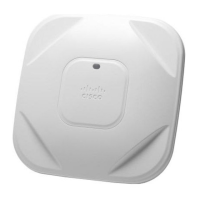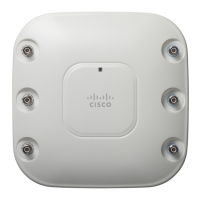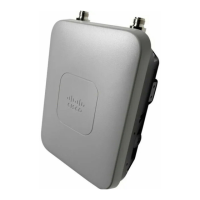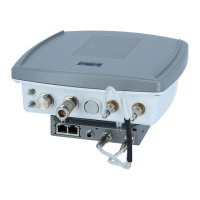In addition, when the AP sends data to user 2, it forms a beam towards user 2, and forms notches (nulls) towards users 1 and 3, as
shown by the red curve. The yellow curve shows a similar beam towards user 3 and nulls towards users 1 and 2. In this way, each of
users 1, 2, and 3 receives a strong copy of the desired data that is only slightly degraded by interference from data for the other users.
Figure 46: MU- MIMO Using a Combination of Beamforming and Null Steering to Multiple Clients in Parallel
For all this to work properly, especially the deep nulls, the AP has to know the wireless channel from itself to all of the users very
accurately. Because the channel changes over time, the AP has to keep measuring the channel, which adds overhead.
Meanwhile, the client receives its desired signal distorted by some interference from the signals intended for other users. This
interference makes the highest constellations such as 256QAM infeasible within an MU-MIMO transmission.
In summary, MU-MIMO allows an AP to deliver appreciably more data to its associated clients, especially for small form-factor
clients (often BYOD clients) that are limited to a single antenna. If the AP transmits to two or three clients, the effective speed increase
varies from a factor of unity (no speed increase) up to a factor of two or three times, according to wireless channel conditions.
You cannot configure to use MU-MIMO, the clients will advertise this capability and the AP will put them into groups.
Elements of Multi-User MIMO
•
802.11ac MU-MIMO is similar to traditional 802.11n MIMO, except instead of one client at a time, it supports up to several
clients that can all receive different data simultaneously.
•
AP does pre-coding for all the clients; basically aggregating clients that advertise MU-MIMO capability into groups that
participate in MU-MIMO process.
•
It is an elaborate process. In MU pre-coding, when the AP is beamforming the signal, for example at 1SS or 2SS rate to a
particular client, the space-time streams have to be constructed so that it also simultaneously null-steers to those space-time
streams being sent to the other clients.
• All users’ MPDUs are padded to the same number of OFDM symbols. The AP seeks out opportunities to send similar size
packets out to the MU-MIMO clients to optimize on air time increasing throughput by sending data out to 2 – 4 clients per
59

